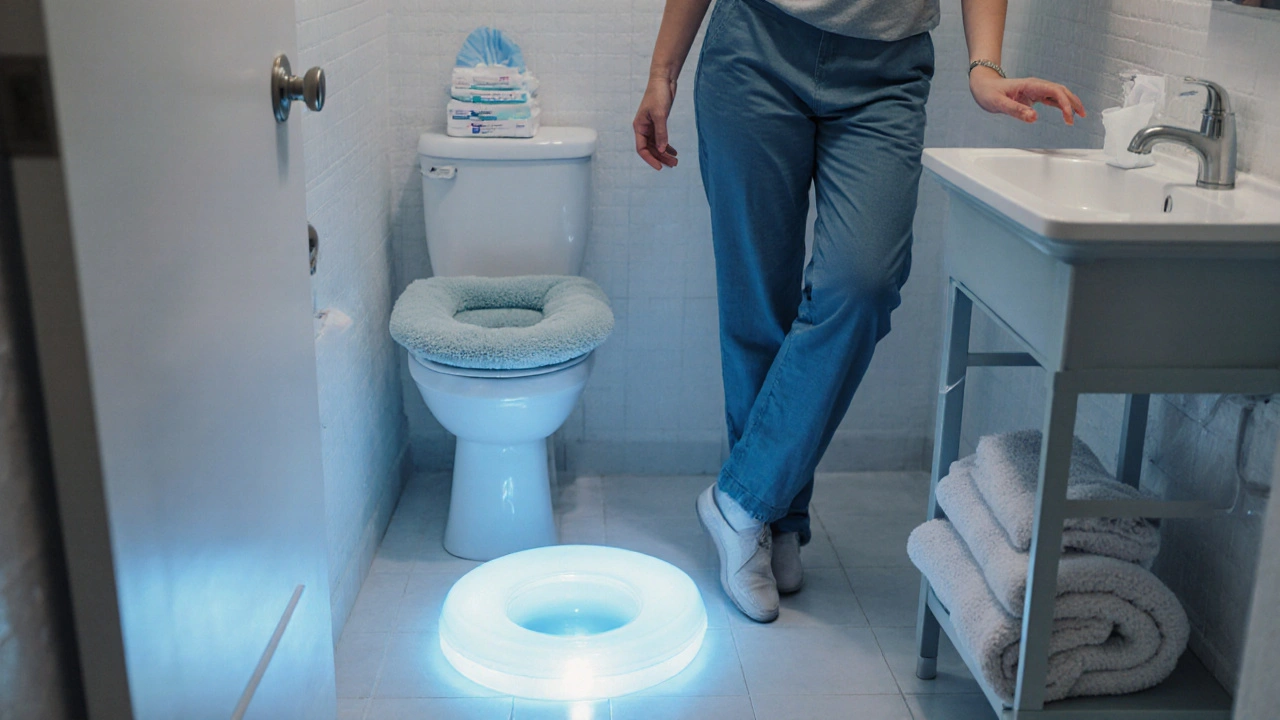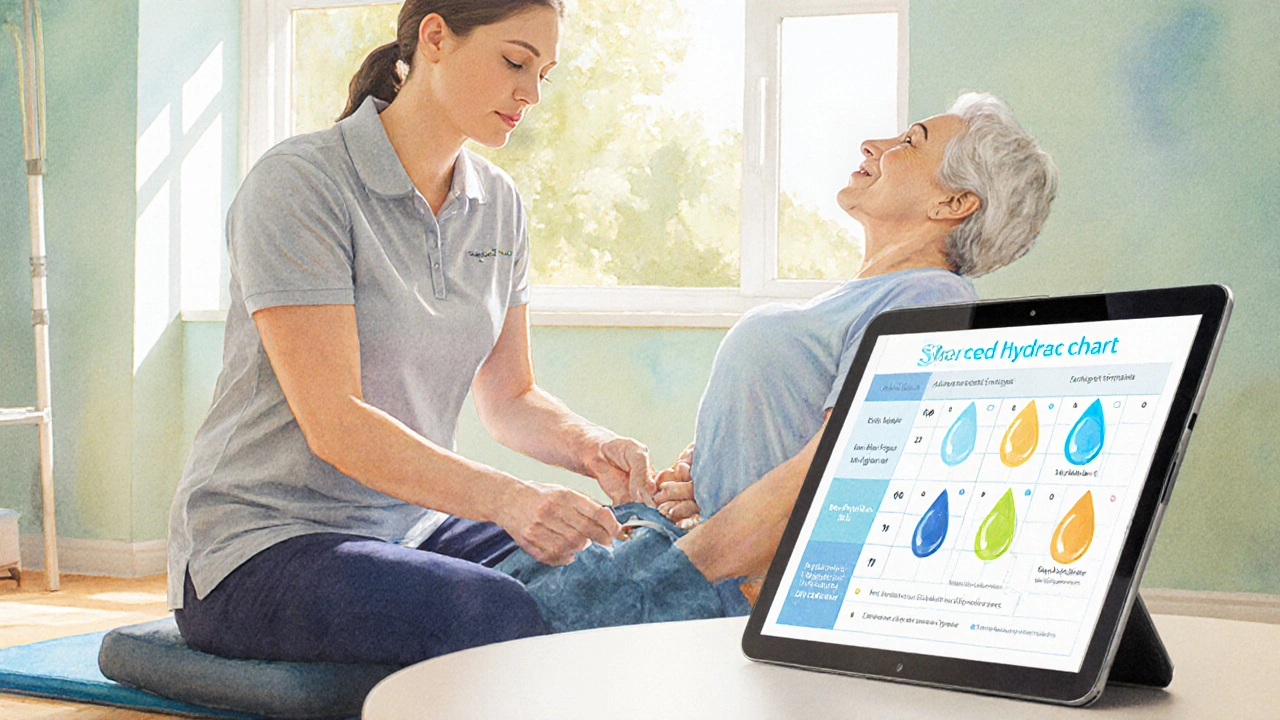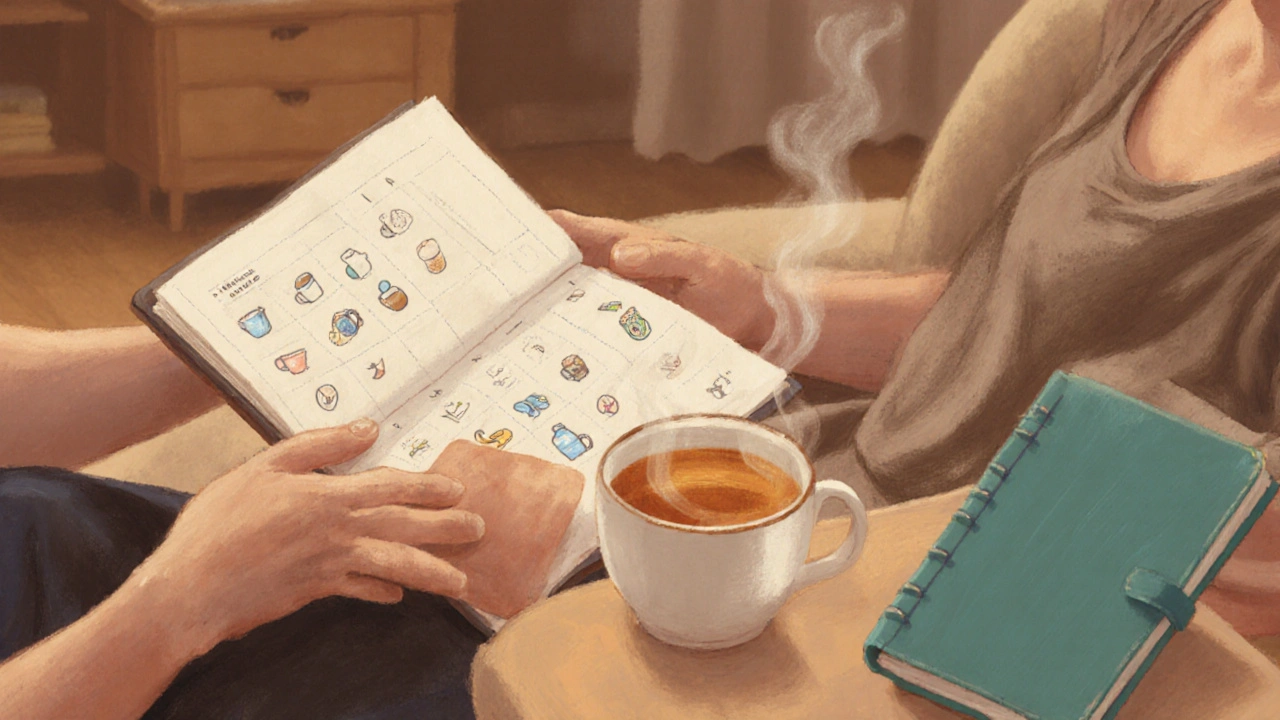Quick Takeaways
- Identify triggers (caffeine, stress, dehydration) and keep a symptom diary.
- Use heat, gentle hydration, and timed bathroom trips to ease spasms.
- Communicate openly with a urologist; share medication, diet, and pain patterns.
- Support the person emotionally-listen, respect privacy, and help with daily routines.
- Plan long‑term strategies like pelvic‑floor exercises and diet adjustments.
What Are Urinary Tract Spasms?
Urinary tract spasms are involuntary, painful contractions of the bladder or urethra that cause a sudden, urgent need to urinate. They often feel like a tight knot in the lower abdomen and can be triggered by infection, irritation, or nerve irritation. While not a disease on its own, spasms are a symptom that signals something is off in the urinary system.
How Do They Differ From a Simple UTI?
A urinary tract infection (UTI) usually brings fever, cloudy urine, and a burning sensation. Spasms, on the other hand, focus on muscle contractions and urgency without the classic infection signs. However, UTIs can provoke spasms, so it’s common for the two to appear together.
Typical Triggers and Symptoms
Knowing what sets off the spasms helps you prevent flare‑ups. Common triggers include:
- Excess caffeine or alcohol.
- Dehydration - not drinking enough water.
- Stress or anxiety, which can tighten pelvic muscles.
- Certain medications, especially diuretics.
- Bladder irritants like spicy foods or acidic fruits.
Symptoms often show up as:
- Sudden, intense urge to pee.
- Sharp cramping in the lower abdomen or pelvic area.
- Leaking small amounts of urine during the spasm.
- Discomfort that eases after a bathroom break.
Immediate Steps You Can Take
- Hydrate smartly. Offer warm water or herbal tea every hour, but avoid sugary or caffeinated drinks.
- Apply gentle heat. A warm compress on the suprapubic area (just above the pubic bone) relaxes the bladder muscles and reduces pain.
- Use timed voiding. Encourage a bathroom visit every 2‑3 hours, even if there’s no urge. This trains the bladder to empty more predictably.
- Offer over‑the‑counter antispasmodic medication. If a doctor has approved it, keep the medication handy and follow the prescribed dosage.
- Keep a symptom journal. Record food, fluid intake, stress events, and spasm intensity. Patterns become clear fast.

Creating a Supportive Environment
Being a caregiver isn’t just about physical assistance; emotional safety matters just as much.
- Listen without judgment. Let your loved one describe the pain in their own words. Validation reduces anxiety, which can itself trigger more spasms.
- Maintain privacy. Keep bathroom visits discreet. Simple gestures like closing the door or providing a towel can make a big difference.
- Assist with logistics. Stock the bathroom with easy‑to‑reach wipes, a night‑light, and a comfortable seat cushion. Small changes cut down on embarrassment.
- Encourage movement. Light walking after meals can help the pelvic floor relax, lowering spasm frequency.
When to Call a Professional
Not every spasm needs a doctor, but certain red flags demand prompt attention:
- Fever over 38°C (100.4°F).
- Blood in urine.
- Spasms lasting longer than an hour without relief.
- Sudden loss of bladder control.
Reach out to a urologist or primary care physician. Bring the symptom journal, a list of current medications, and any recent lab results. This prep speeds up diagnosis and shows you’re actively involved.
Long‑Term Management Strategies
Beyond emergency relief, think about lifestyle tweaks that keep spasms at bay.
- Hydration schedule. Aim for 1.5-2L of water daily, spread evenly. Set phone reminders if needed.
- Mindful diet. Limit caffeine to one small cup a day, swap soda for sparkling water, and reduce spicy or acidic foods.
- Pelvic‑floor therapy. A certified physiotherapist can teach exercises that strengthen the pelvic floor muscles and improve bladder control.
- Stress‑reduction techniques. Short breathing exercises, meditation, or gentle yoga before bedtime can lower involuntary muscle tension.
- Medication review. Some drugs (like certain antihistamines) may worsen spasms. Ask the doctor to review the prescription list annually.
Home Remedies vs. Medical Treatments
| Approach | Typical Benefits | Potential Risks | When to Use |
|---|---|---|---|
| Warm compress | Quick muscle relaxation, pain relief | Burn risk if too hot | First‑line for mild spasms |
| Hydration & timed voiding | Reduces urine concentration, trains bladder | None if done correctly | Daily management |
| Pelvic‑floor exercises | Improves control, lowers frequency | Improper technique may strain muscles | Long‑term prevention |
| Prescription antispasmodics (e.g., oxybutynin) | Directly reduces muscle overactivity | Dry mouth, constipation, dizziness | Moderate to severe, under doctor guidance |
| Botox injections | Long‑lasting relief (3‑6 months) | Temporary urinary retention, need for repeat shots | Refractory cases after other meds fail |
Frequently Asked Questions
Can dehydration really cause bladder spasms?
Yes. When the body is low on water, urine becomes more concentrated, irritating the bladder lining and prompting involuntary contractions. Regular, moderate fluid intake is one of the simplest ways to prevent spasms.
Is it safe to use over‑the‑counter pain relievers during a spasm?
Acetaminophen is generally safe for short‑term pain relief, but NSAIDs like ibuprofen can irritate the stomach and, in rare cases, affect kidney function, especially if the person is already dehydrated. Always check with a healthcare provider before combining medications.
How long does it take for pelvic‑floor therapy to show results?
Most patients notice improvements within 4‑6 weeks of consistent exercises, though full benefits may take 3‑4 months. Consistency and proper technique are key.
Should I avoid all caffeine if my loved one has spasms?
Total avoidance isn’t always necessary. Many people can tolerate a small cup of coffee (about 100mg caffeine) without flare‑ups. The trick is to monitor the symptom journal and cut back if a pattern emerges.
When is it appropriate to consider Botox injections?
Botox is usually reserved for chronic spasms that haven’t responded to oral antispasmodics, pelvic‑floor therapy, and lifestyle changes. A urologist will evaluate bladder function tests before recommending it.

Next Steps for Caregivers
Take these three actions today:
- Print a simple hydration chart and place it on the fridge.
- Set up a shared digital journal (Google Docs, OneNote) where both of you log foods, fluids, and spasm intensity.
- Schedule a tele‑health visit with a urologist to discuss whether an antispasmodic or a referral for pelvic‑floor therapy is appropriate.
Remember, caring for someone with urinary tract spasms is a marathon, not a sprint. Small, consistent steps-both physical and emotional-make the biggest difference over time.


Bernard Valentinetti
October 1, 2025 AT 20:23Ah, dear caregiver, thou art the unsung steward of the bladder’s tempest; a beacon in the nocturnal gloom, a balm to the spasmodic symphony of the pelvis-truly, your role transcends the mundane, elevating the act of hydration to a ritual of reverence; consider each sip of warm tea as a sonnet whispered to the weary detrusor, each warm compress as a hearth‑fire against the icy clutch of discomfort 😊.
Kenneth Obukwelu
October 1, 2025 AT 20:56Indeed, Bernard, your poetic framing of caregiver duties adds a dignified flair; I wholeheartedly echo the sentiment that mindfulness and patience are the twin pillars of support, and I’d add that a shared diary can become a collaborative canvas where both caregiver and patient paint patterns of relief together.
Josephine hellen
October 1, 2025 AT 21:46Hey there, wonderful people! 🌟 I just want to say that navigating urinary tract spasms can feel like walking through a maze with flickering lights, but every little step you take adds up to a brighter path ahead. First, celebrate the victories-whether it’s a day with fewer spasms or a successful timed voiding routine-because those wins build confidence. Second, keep that symptom journal open and honest; over time you’ll see the subtle connections between a cup of coffee and a flare‑up. Third, remember hydration isn’t just about drinking water, it’s about drinking it wisely-warm, soothing, and spaced out throughout the day. Fourth, never underestimate the power of a gentle stretch or a calming breath; those moments of relaxation can coax the pelvic muscles into a gentler rhythm. Fifth, involve the whole household: a night‑light, easy‑to‑reach wipes, and a soft cushion can make bathroom trips feel less intimidating. Sixth, talk openly with your loved one about how they feel; validation reduces anxiety, which often fuels the spasms. Seventh, schedule regular check‑ins with a urologist, even when things seem stable, to catch any hidden changes early. Eighth, explore pelvic‑floor therapy; many find relief after just a few weeks of guided exercises. Ninth, if medication is prescribed, keep a clear log of dosages and side effects so you can discuss adjustments with the doctor. Tenth, be patient with yourself-caregiving is a marathon, not a sprint, and self‑compassion fuels long‑term stamina. Eleventh, share your journey with a support group; hearing others’ stories can reveal tricks you never considered. Twelfth, keep the environment calm-soft music or aromatherapy can ease the mind, and the mind eases the body. Thirteenth, celebrate progress with a small treat-perhaps a favorite tea or a brief walk in the park. Fourteenth, remind yourselves that setbacks are normal; they don’t erase the progress you’ve made. Fifteenth, keep the conversation with healthcare providers honest and detailed, because they can only help with the information you provide. Finally, stay hopeful, stay connected, and know that each day you’re building a stronger, more resilient partnership that can weather the spasms together.
Ria M
October 1, 2025 AT 22:20Behold, the tapestry of care unfurls before us; every thread of hydration, each warm compress, weaves a narrative of solace-yet one must not neglect the subtle cadence of breath, for it is the silent metronome that steadies the trembling bladder; thus, let us champion the gentle art of timed voiding as a symphony of predictability, and may the diary stand as a luminous ledger of cause and effect, guiding us through the labyrinth of triggers with precision and poise.
Michelle Tran
October 1, 2025 AT 22:53Sounds solid 👍
Delilah Jones
October 1, 2025 AT 23:26Look, the basics are simple and non‑negotiable: stay hydrated, avoid excess caffeine, and keep a regular bathroom schedule. If you skip any of those, you’re basically inviting the spasms to throw a party.
Pastor Ken Kook
October 2, 2025 AT 00:00Totally agree, Delilah. 👍 Keeping it consistent really does the trick.
Northern Lass
October 2, 2025 AT 00:33One might posit that the prevailing orthodoxy surrounding urinary tract spasm management is, in fact, a carefully orchestrated construct designed to perpetuate a pharmaceutical hegemony; consequently, a critical appraisal of lifestyle‑centric interventions reveals a conspicuous under‑representation in mainstream discourse, thereby necessitating a recalibration of therapeutic priorities toward empirically validated, low‑cost modalities.
Johanna Sinisalo
October 2, 2025 AT 01:06Indeed, Northern Lass, the evidence underscores the importance of integrating hydration schedules and pelvic‑floor physiotherapy into a cohesive care plan; I would encourage caregivers to partner with a qualified therapist to tailor exercises that reinforce bladder control while simultaneously monitoring fluid intake with a shared log.
OKORIE JOSEPH
October 2, 2025 AT 01:40Stop overthinking this its just water and routine you need to follow
Lucy Pittendreigh
October 2, 2025 AT 02:13Honestly you should focus on more pressing health issues instead of obsessing over occasional spasms